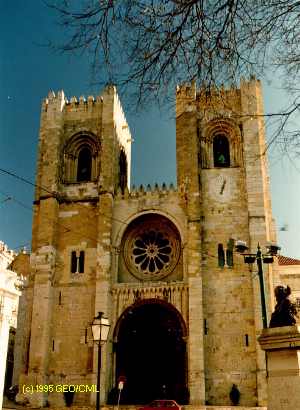
Sé
(Cathedral)
After capturing Lisbon from the Moors in 1147, Afonso Henriques ordered
a cathedral built for his English bishop. By the end of that century, a
Romanesque cathedral had been completed, as well as defensive capabilities
for a city that did not yet feel safe from attack. Although Gothic additions
and, later, baroque details were added, after the cathedral suffered extensive
damage in the 1755 earthquake, it was reconstructed in its earlier style,
producing the bare but imposing church on view today.
The façade has enormous crenulated towers and solid walls, leaving only small Romanesque apertures for the rose window, bells, and entry portals. Inside, a pure Romanesque barrel vault rests on plain pillars that lead to a simple lantern at the crossing. The altar is 18th-century; behind it is a fine 14th-century Gothic ambulatory. On the right, in the south transept, is the entrance to the sacristy, which serves as the treasury. It contains relics of Portugal's patron, St. Vincent, in a lovely mother-of-pearl casket.
Largo da Sé
Lisbon
Portugal


